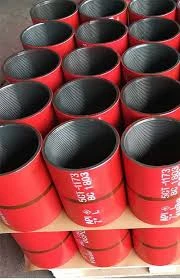- Afrikaans
- Albanian
- Amharic
- Arabic
- Armenian
- Azerbaijani
- Basque
- Belarusian
- Bengali
- Bosnian
- Bulgarian
- Catalan
- Cebuano
- Corsican
- Croatian
- Czech
- Danish
- Dutch
- English
- Esperanto
- Estonian
- Finnish
- French
- Frisian
- Galician
- Georgian
- German
- Greek
- Gujarati
- Haitian Creole
- hausa
- hawaiian
- Hebrew
- Hindi
- Miao
- Hungarian
- Icelandic
- igbo
- Indonesian
- irish
- Italian
- Japanese
- Javanese
- Kannada
- kazakh
- Khmer
- Rwandese
- Korean
- Kurdish
- Kyrgyz
- Lao
- Latin
- Latvian
- Lithuanian
- Luxembourgish
- Macedonian
- Malgashi
- Malay
- Malayalam
- Maltese
- Maori
- Marathi
- Mongolian
- Myanmar
- Nepali
- Norwegian
- Norwegian
- Occitan
- Pashto
- Persian
- Polish
- Portuguese
- Punjabi
- Romanian
- Russian
- Samoan
- Scottish Gaelic
- Serbian
- Sesotho
- Shona
- Sindhi
- Sinhala
- Slovak
- Slovenian
- Somali
- Spanish
- Sundanese
- Swahili
- Swedish
- Tagalog
- Tajik
- Tamil
- Tatar
- Telugu
- Thai
- Turkish
- Turkmen
- Ukrainian
- Urdu
- Uighur
- Uzbek
- Vietnamese
- Welsh
- Bantu
- Yiddish
- Yoruba
- Zulu
pup joint tubing
Understanding Pup Joint Tubing An Essential Component in Oil and Gas Operations
In the oil and gas industry, the intricacies of drilling and production operations rely heavily on specialized equipment. One such vital component is the pup joint tubing, which plays an essential role in the overall efficiency and safety of drilling projects. This article delves into the characteristics and applications of pup joints, their significance in the oil and gas landscape, and the considerations surrounding their use.
What is Pup Joint Tubing?
Pup joints are short lengths of pipe or tubing, generally ranging from 1 to 10 feet in length. They are designed to connect various segments of production tubing or casing, making it easier to customize the overall length of a tubular string. Typically made from high-strength steel, pup joints can withstand significant pressure, making them suitable for various drilling and completion operations.
The unique design of pup joints allows them to accommodate changes in elevation, direction, and diameter of the piping systems used in oil and gas operations. This adaptability enables operators to tailor their equipment based on specific project requirements, whether it involves a deepwater drilling operation or a land-based production unit.
Applications of Pup Joint Tubing
Pup joints serve several critical functions in the oil and gas industry. Some of their primary applications include
1. Connecting Wellbore Equipment Pup joints are often used to connect various sections of tubing, helping maintain the integrity and fluidity of wellbore operations. They ensure that different components of the tubing string are smoothly linked, thereby optimizing the flow of oil or gas from the reservoir to the surface.
2. Maintaining Depth During drilling or well completion, precise measurements are crucial. Pup joints allow operators to achieve the necessary depth in their tubing strings without requiring full-length sections of standard tubing. This feature is particularly useful when navigating complex geological formations.
3. Facilitating Well Intervention In situations where adjustments or repairs are needed, pup joints can simplify the process of well intervention. Their short lengths make handling and transportation easier, reducing downtime and operational costs associated with pulling and re-installing longer tubing sections.
pup joint tubing

4. Enhancing Flexibility Operators can utilize pup joints to adjust the dimensions and configurations of their tubular systems, allowing for greater flexibility in accommodating various drilling and production scenarios. This adaptability minimizes the need for custom orders of non-standard-length tubes, reducing lead times and costs.
Considerations for Use
When using pup joint tubing, several factors warrant consideration to ensure safety and efficiency
1. Material Selection Choosing the right material for pup joints is essential, as they must withstand harsh environments and pressure. Operators often select materials based on specific applications, including corrosion resistance and tensile strength.
2. Threading and Connections The quality of threading and connections in pup joints is critical to prevent leaks and failures during operations. Operators must ensure that appropriate standards are followed in manufacturing these joints to maintain reliability.
3. Inspection and Maintenance Regular inspections and maintenance of pup joints are essential for identifying wear, damage, or potential failures. Implementing a routine checklist can help in tracking the health of these components, ensuring they are fit for use.
4. Compliance and Safety Standards Adhering to industry regulations and safety standards is crucial when using pup joints. Operators should be familiar with relevant guidelines from organizations like the American Petroleum Institute (API) and implement best practices to mitigate risks associated with wellbore operations.
Conclusion
Pup joint tubing is a fundamental component of oil and gas operations, providing the flexibility and connectivity necessary for efficient drilling and production. By understanding their applications, benefits, and the best practices for their use, operators can enhance their operational efficiency, maintain safety, and ultimately contribute to the market's productivity. As the oil and gas industry continues to evolve, the role of pup joints will remain critical in navigating the challenges ahead.
-
Tubing Pup Joints: Essential Components for Oil and Gas OperationsNewsJul.10,2025
-
Pup Joints: Essential Components for Reliable Drilling OperationsNewsJul.10,2025
-
Pipe Couplings: Connecting Your World EfficientlyNewsJul.10,2025
-
Mastering Oilfield Operations with Quality Tubing and CasingNewsJul.10,2025
-
High-Quality Casing Couplings for Every NeedNewsJul.10,2025
-
Boost Your Drilling Efficiency with Premium Crossover Tools & Seating NipplesNewsJul.10,2025







